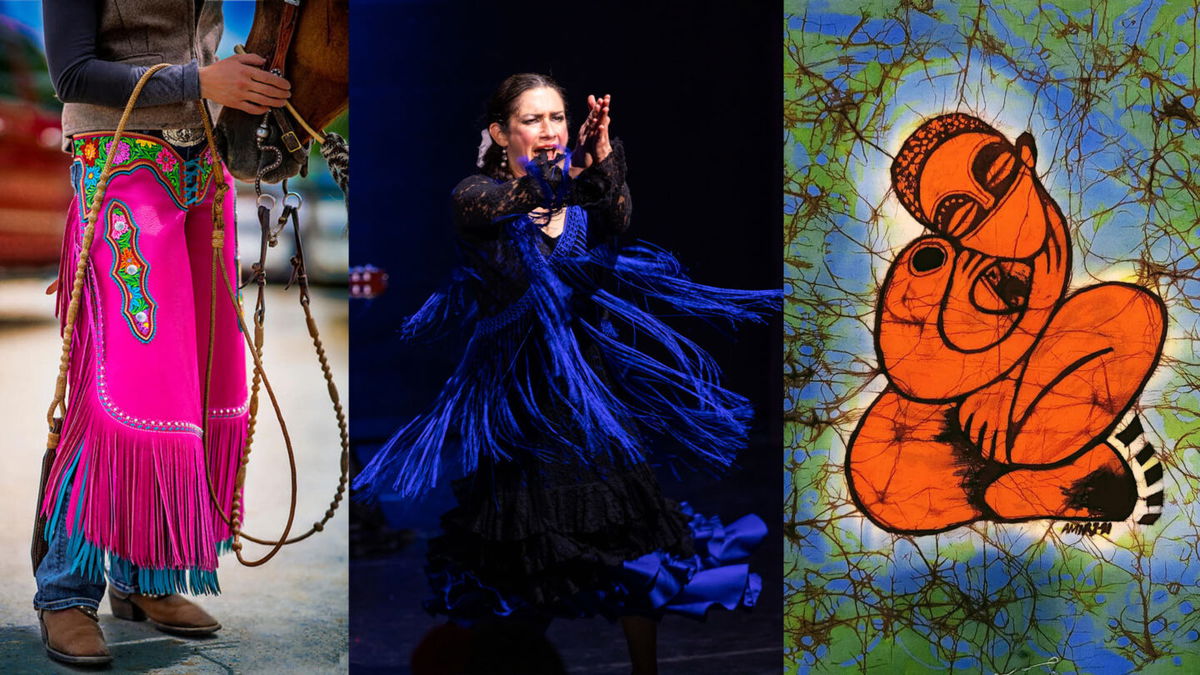2024 Traditional Arts Apprenticeship awards

IDAHO FALLS, Idaho (KIFI) – The Idaho Commission on the Arts has awarded seven master artists and their qualified apprentices $3,000 each as part of the annual Traditional Arts Apprenticeship Program.
The program is designed to facilitate learning partnerships between a recognized master artist and an apprentice to continue artistic traditions in a shared community.
For 38 years, the Arts Commission has safeguarded Idaho’s unique cultural legacy with over 500 Idaho native, folk, and immigrant master artists, and their apprentices, who carry on Idaho’s artistic and occupational traditions and skills. As a recognized mentor shares skills, techniques, and knowledge, the program helps to ensure cultural continuity for future generations of tradition bearers. These apprenticeship teams offer some of the most diverse, equitable, and inclusive creative expressions our state upholds, and we are proud to support the one-on-one learning opportunities this grant provides.
Congratulations to this year’s recipients of the Traditional Arts Apprenticeship Program:
BATIK PAINTING Amiri Osman (Boise) & Meridian Negilski (Eagle)
One of my earliest memories of art was the large batik that hung in the living room of my childhood apartment. My love for all traditional African art began with that early exposure and my search for connection to my identity and heritage as a young African American girl. I spent hours at the African cultural arts center in our neighborhood, leading to a lifetime commitment to studying traditional African art…As with other traditional arts, batik is significant in that reflects the symbols, lives, and stories of a people. Storytelling in itself has profound importance in both African culture and in the continual evolution and shaping of the African American experience. For many of us, our identities, histories, worldviews, and abilities to relate to the society around us have been informed by our connection to ancestral culture, and by the stories and practices that have been handed down to us by community elders. – Meridian Negilski
FLAMENCO DANCING Rina Orellana (Palos Verdes, California) & Kelli Brown (Boise)
I am very excited about having an opportunity to learn Solea with Rina, I will explore techniques such as complex footwork combinations, marking steps and musical structure. The Solea is a 12/8 music structure with the downbeat changing from 12 to 1, depending on what section of the dance you are doing. While I have a basic understanding of musical structure for some other Flamenco forms, learning a completely new one requires intensive study. – Kelli Brown
HORSEHAIR HITCHING Casey Backus (Ammon) & Tracy Alanis (Richfield)
I am self-taught using an old out-of-print craft manual that was missing a few pages. Presently, I have come to know about a dozen other artists who work in this medium, all have their own distinctive style. I believe each of us have a few personal techniques that were developed from a lack of information. Decades of practice have proven them to be sound. – Casey Backus
LEATHER CARVING Cary Schwarz (Salmon) & Jeff Lincoln (Meridian)
My first exposure to leather craft occurred as a youngster of 12 years old through 4-H. I grew up in rural Wyoming and it was common for people to make and ornament leather items for everyday use. It started as a utilitarian craft and as I progressed, I learned to add decorative aspects to the items. Fast forward to 2004 when I decided to make a guitar strap for myself at the age of 45… I will be studying with saddle maker Cary Schwarz for the apprenticeship. Saddle making is a trade that incorporates a wide variety of skills to achieve the final product. We will not be studying saddle making per se but utilizing Cary’s artistry and craftsmanship to teach me skills needed for designing and assembling leather items that appeal to a wider audience. I want to expand my knowledge so I can pay it forward. – Jeff Lincoln
NEZ PERCE WEAVING Jenny Williams (Lapwai) & Rhonda Taylor (Lapwai)
The importance of basket weaving for me really entails preserving the art form and passing on what I have learned to others in my family and community so that we nurture this art form forever… The importance of passing down this tradition to my daughter is extremely important to me with the emphasis of her continuing to share her cultural knowledge of basket weaving for generations to come. – Rhonda Taylor
SADDLEMAKING Chase & Bronson Carter (Pingree)
He loves the western lifestyle and has great desires to pursue it. He has always taken pride in the fact that I'm a saddle maker. This grant would enable me to leave my work and spend quality one on one time to help him with his first saddle and help him purchase some tools. – Chase Carter
Saddle making plays a big role in ranching. Without a saddle there is no roping from a horse, it's not as easy to stay on, and it's just not as comfortable. My dad has been building saddles for about 20 years, and that keeps our family riding well-built, custom saddles as we ranch and ride. Without saddles we wouldn't be able to do the work that ranching requires. – Bronson Carter
SADDLEMAKING Deana Attebery (Emmett) & Kari McCluey (Boise)
Deana Attebery is a well-known and respected master leather artisan in my community. She has done a vast amount of work for my fellow horsemen as well as a tremendous amount of teaching of the trade. I first met Deana when I ordered custom belts for my sons and me. Shortly thereafter, I moved to Middleton from Star, and we became neighbors and horseback riding friends. After making my first pair of chaps, I began taking lessons from her and have continued to do so off and on for the past twenty years. I respect her work immensely and consider her one of my dearest friends. – Kari McCluey






